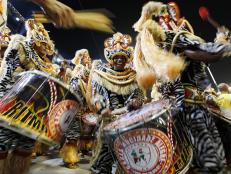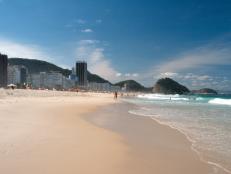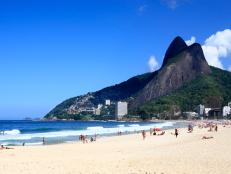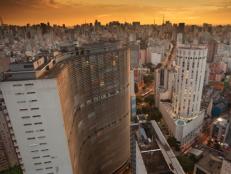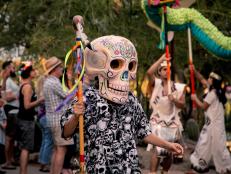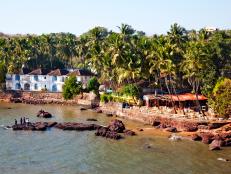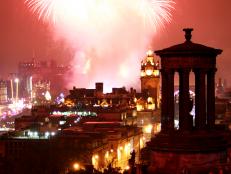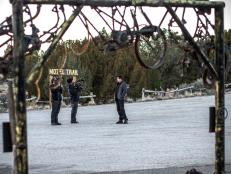Carnival in Rio de Janeiro
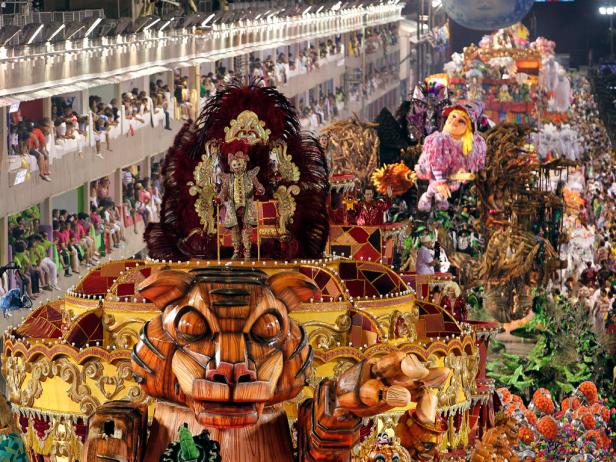
Reuters
Rio de Janeiro’s Carnival celebration is undoubtedly the planet’s most ostentatious, bombastic, mind-blowing spectacle, uniting millions of Brazilians and visitors within the lush environs of the Marvelous City in rapturous merriment over the 5 days preceding the pious Catholic season of Lent. The party happens every February or March, ending 40 days before Easter and commemorating the close of the long, hot Brazilian summer with a lavish, world-renowned Carnival parade in the Sambadrome. Also on tap are popular itinerant street parties called blocos, and chic, high-gloss costumed balls called bailes. Non-Carnival-related commerce and industry in Rio completely shut down for the fun, so there is no escape from the intense debauchery.

With a parade tradition stretching as far back as the 1930s, Rio is home to over 70 samba schools. Representing modest neighborhoods from throughout the metropolitan area, the largest and most creative schools (collectively, the Grupo Especial) end up competing for cash and nationwide fame during a 2-night bonanza of sound and spectacle in Rio’s one-of-a-kind Carnival stadium, the Sambadrome. First opened in 1984 and designed by Brazil’s architect extraordinaire, Oscar Niemeyer, the nearly 2,300-foot-long stadium, with its distinctive arch -- jokingly referred to as a concrete thong -- holds up to 90,000 raucous spectators who pay anything from R$10 to over R$5,000 for the privilege of cheering on their favorite schools amid the unmatched energy of Carnival.
The competition itself, televised nationally late into the night on the Sunday and Monday of Carnival, consists of a series of performances in which each of the top 12 samba school’s roughly 3,000 members sing and dance nonstop -- with calculated precision for 90 minutes, dressed in dazzling costumes atop monumental floats and slowly parading down the length of the Sambadrome to the wild cheering of fans and the intense scrutiny of the parade judges. The judges consider each school’s performance in categories such as song lyrics, drumming cadence and precision, costumes, overall harmony and allegorical theme, with the lowest scoring schools relegated to the second-string Grupo de Acesso. Themes include whimsical homages to various world cities, historical events, and Brazilian personalities -- 2012’s winning samba school, Unidos da Tijuca, clenched the title with a celebration of popular Brazilian folk singer Luiz Gonzaga. Other contenders include some of Rio’s most revered samba schools, such as perennial favorites Mangueira, Beija-Flor, and Portela.
Carnival Parade Participation
Want to join in the festivities? Locals and visitors alike can participate in the parades by contacting the Rio de Janeiro Independent Samba School League or each school individually. Tickets to watch the event can be purchased in person at the Sambadrome, or online (with a Brazilian ID), and cost from R$10 for the cheapest bleacher seats at the end of the parade route to over R$5,000 for luxury “suites” with open bar and waitstaff. Prime seats in the central grandstands go from R$110 to R$1,000, depending on the date and the parade you wish to see.

Rambunctious street parties called blocos command Rio’s complete attention: The celebrations run from 8 in the morning to almost 8 the next morning. Donning homemade costumes and downing inordinate amounts of beer and cachaça (Brazilian rum), crowds numbering in the hundreds of thousands doff ideas of personal space and congregate throughout Centro and the Zona Sul to flirt and frolic to the beats of Carnival parade drummers, kitchen utensils banged together, old-school boom boxes blasting pop music or just the rhythm of the multitudes.
Blocos pop up throughout Rio, so you won’t have any trouble finding or joining one, but the biggest must-dos include Centro’s raucous Cordao do Bola Preta, the humorously named Volta, Alice! (Come Back, Alice!) in Rio’s Zona Sul area of Laranjeiras, Flamengo’s Beatles-themed Bloco do Sargento Pimenta, the funky-fresh Afroreggae in Rio’s Ipanema neighborhood, and the absolutely massive Monobloco, wrapping things up in Centro (check individual websites for dates and times). The parties are intense and if you don’t like rubbing elbows with strangers, just stay home. And keep your cash stashed in your underwear!
Rio’s Exclusive Carnival Balls
In keeping with the European origins of Carnival, Rio’s formal masquerade balls and nightclub parties, bailes, add an air of exclusivity to the fete that can be fun … if not taken too seriously. The Copacabana Palace Hotel, the undisputed grand dame of the Rio oceanfront, holds the annual Magic Ball, requiring guests to wear evening gowns, tuxedos or elegantly expensive costumes. The Museum of Modern Art (MAM) hosts the Baile Glamurama, featuring live Brazilian pop and samba performances (costumes required). In Centro, the vast Scala showplace hosts themed balls each night of Carnival, culminating in the boisterous Scala Gay Gala, the city’s largest LGBT Carnival event. Tickets for each of the balls range from R$100 to R$500 and can be purchased in advance by contacting the venue.

